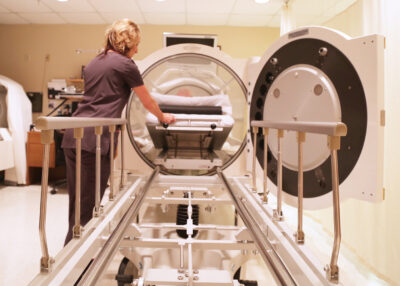Hyperbaric Oxygen Therapy
 In the Cheyenne Regional Medical Center’s Wound Management & Hyperbaric Medicine Department, we have two state-of-the-art hyperbaric oxygen chambers.
In the Cheyenne Regional Medical Center’s Wound Management & Hyperbaric Medicine Department, we have two state-of-the-art hyperbaric oxygen chambers.
Hyperbaric oxygen therapy (HBOT) helps the body’s natural ability to heal by delivering a high concentration of oxygen to stubborn wounds that won’t respond to more conventional wound care therapies.
Types of wounds we treat with Hyperbaric Oxygen Therapy include:
- Acute peripheral arterial insufficiency
- Chronic refractory osteomyelitis
- Osteoradionecrosis
- Soft tissue radionecrosis
- Diabetic ulcers of the lower extremities
- Compromised skin grafts (preparation and preservation)
For more information about hyperbaric oxygen therapy at Cheyenne Regional Medical Center, please call (307) 633-6088.